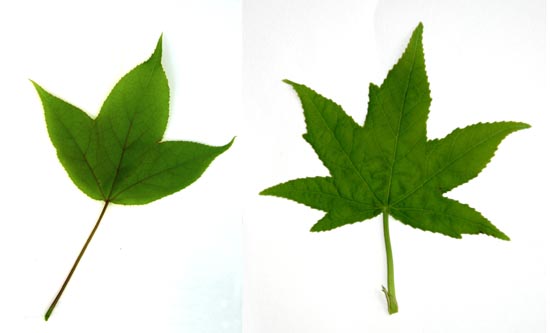In "Maples of the World" (document No.4 ) we can see the next description.
" The word acer derives from the Proto-Indo-European word ac, meaning "sharp, to be sharp, to sharpen" and seems to represent the sound of sharpness. The word's association with the genus Acer possibly comes from the pointed leaves associated with maples, a feature that is reflected also in the German synonym Spitzblatt."
Besides, in another book, "acer" means "to split or to be split", from the shape of the leaves, furthermore, "acer" derives from "acris", meaning "hard" because of the hardness of maple wood.
Those words are used such as "maple" in English, "Ahorn" in German and "erable" in French.
is usually used for maples, but in this homepage I'll use the names "momiji" or "kaede"; both have the same meaning botanically.




